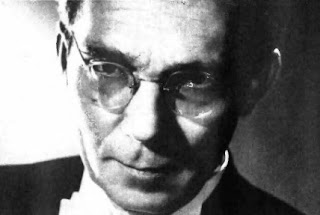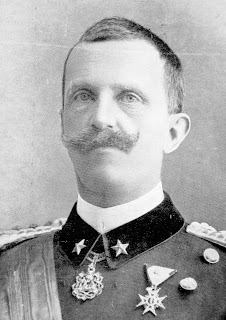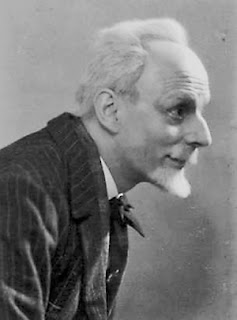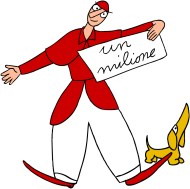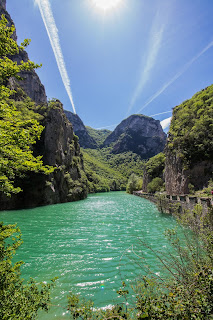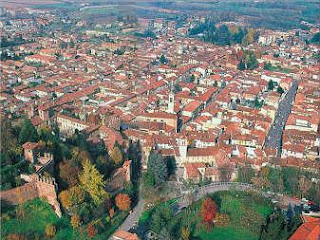Competed at two Olympics before turning to screen career
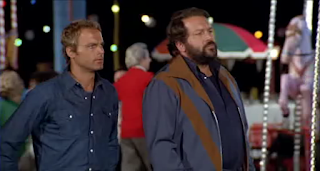 |
| Bud Spencer (right) with Terence Hill in the 1974 comedy Watch Out, We're Mad! |
The actor known as Bud Spencer was born Carlo Pedersoli on
this day in 1929 in Naples.
He was best known for the series of so-called Spaghetti Westerns
and comedies he made with another Italian-born actor, Terence Hill.
Hill was from Venice and his real name was Mario Girotti. They began their partnership in 1967 in a
Spaghetti Western directed by Giuseppe Colizzi called God Forgives…I Don’t! and
were asked to change their names so that they would sound more American.
Pedersoli came up with Bud Spencer because his movie idol
was Spencer Tracy and his favourite American beer was Budweiser. The two would go on to make 18 movies
together, with westerns such as Ace High (1968) and They Call Me Trinity (1970)
winning them box office success.
As Carlo Pedersoli, he had already achieved a measure of
fame as a swimmer, the first Italian to swim the 100m freestyle in less than
one minute. He represented Italy at the
Olympics in Helsinki in 1952 and Melbourne four years later, on each occasion
reaching the semi-final in the 100m freestyle.
He also played professional water polo, winning an Italian championship
with SS Lazio and a gold medal at the 1955 Mediterranean Games in Barcelona.
 |
| Bud Spencer in 2015 |
In a rich and varied life, Pedersoli also learned how to fly
jets and helicopters, ran his own airline and, at the personal invitation of
Silvio Berlusconi, stood as a Forza Italia candidate in regional elections in
Lazio in 2005, although he was not elected.
Born in the Santa Lucia area of Naples, Pedersoli showed an
aptitude for swimming from an early age.
His family moved to Rome when he was 10 and he began to swim
competitively while attending high school.
He attended Rome’s Sapienza University from the age of 17, studying
chemistry, but was forced to give up his course when his family moved again,
this time to South America.
For two years, he worked at the Italian consulate in Recife,
Brazil, and became fluent in Portuguse.
Back in Rome, he made his debut in international swimming
competition in 1949 and, after his 59.5 sec 100m freestyle in 1950 he swam for
Italy in the European championships in Vienna.
After a silver medal at the 1951 Mediterranean Games in Alexandria
(Egypt), he was called up for the Italian Olympic squad.
At the same time, Pedersoli was studying law and taking his
first tentative steps in the movie business, landing a part as a Praetorian
Guard in in the 1951 MGM epic Quo Vadis, filmed in Italy.
There was no overnight rise to fame. He married Maria Amato, daughter of the
Italian film producer Giuseppe Amato, in 1961, but his career did not take off
until that Spaghetti Western offer in 1967.
A distinctive figure, heavily built and with a thick black beard, he
quickly became a favourite, particularly for the way his character would end
on-screen fights by slamming his fist down on the head of his opponent.
 |
| Before he found fame as Bud Spencer the movie star, Carlo Pedersoli was a Olympic swimmer |
He decided he would learn to fly after appearing with
Terence Hill in a 1973 adventure comedy called All The Way Boys, in which
Colizzi took his two Spaghetti Western characters and placed them in a modern
context, as bush pilots in South America, where they made money by faking aircraft
crashes for insurance scams.
By 1984, with a licence to fly jets and helicopters, Spencer had
set up Mistral Air, an air-mail handler which also flew Catholic pilgrims to
sacred religious sites. He later sold
the airline to Poste Italiane, who also operate commercial passenger flights.
Spencer had a number of starring roles on television in the
1990s and continued to make films until well into his 70s. He died in Rome in 2016, aged 86. His movies with Terence Hill are still regularly
shown on television and he retains an enthusiastic following in several
countries around Europe, notably Germany and Hungary.
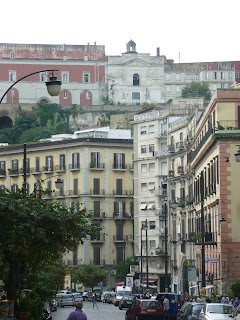 |
| Via Santa Lucia leads from the Royal Palace to the waterfront at Castel dell'Ovo |
Travel tip:
Santa Lucia is the area of central Naples that can be found
between the Royal Palace and Borgo Marinari, the small island on which stands
Castel dell’Ovo. The first settlement
there was established by the Greeks and the Roman general Lucullus was so taken
with the views across the bay that he built a sumptuous fortified villa, Castellum
Lucullanum, that would eventually become the home in exile of the last Roman
emperor, Romulus Augustus. Nowadays, the
area is a mix of grand hotels, sailing clubs and many fine fish restaurants.
 |
| Castel dell'Ovo with the yachts and harbourside restaurants of Borgo Marinari in the foreground |
Travel tip:
Castel dell’Ovo was built on the site of the Castellum
Lucullanum, which was demolished in the 9th century. The castle was
built by the Normans in the 12th century and remains the oldest
fortified structure in Naples. It took
its name from a legend about the Roman poet Virgil, who in medieval times was
thought to have mystical powers. The
legend had it that Virgil placed a magical egg – ouvo in Italian – in the
foundations, and that had the egg ever broken then the castle would be
destroyed that Naples would suffer a series of catastrophes.
